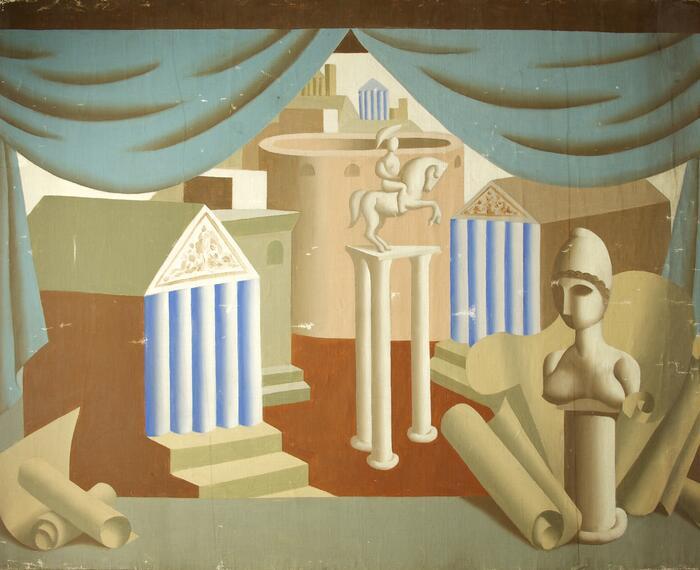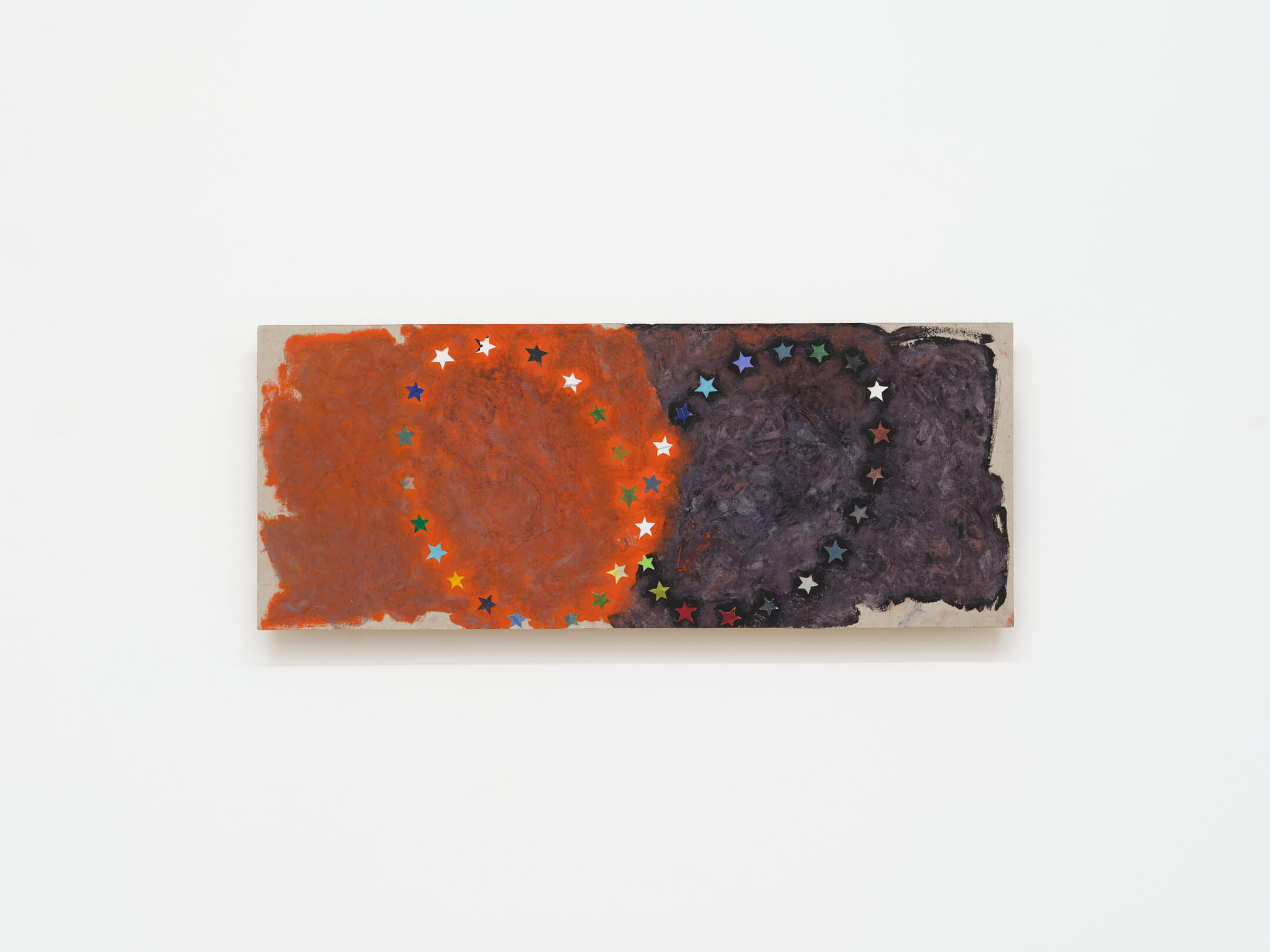


Courtesy the artist Photograph by Daniel Browne
Final Hot Desert, Flat 3, 5 Bowman’s Mews, London, N7 6FS
24 February – 23 March, 2024
Encountering the work of Pol Wah Tse at the apartment-come-gallery space ‘Final Hot Desert’, there is a clandestine language in play. The artist’s name stands in as the title for the show and this sets a precedent for how it should be interpreted – nothing is off limits.
The striking nature of the wall works is directly registered at eye level. Grey boards (the tops of which are meticulously aligned) are slightly set off from the wall and arranged in a modular fashion. Operating as individual pieces that come together to form a whole, they visibly interrupt the space, at points confronting the viewer via an awkward nook or cranny. Their precise staging contrasts the indeterminate nature of the paint and cooking oil applied to their surfaces, creating a flattened haze that is absorbed by the boards fibre whilst simultaneously attempting to bleed across the edge of the frame. Pol Wah Tse maintains that he is a sculptor rather than a painter, fascinated by the material and chemical properties of paint.
Individually hand-cut, paper stars form oval patterns, which traverse the grey boards in recurring and interlaced constellations. Stars have held diverse symbolic roles throughout history: from the pentagram's iconography in ancient Egypt and Greece to their use in medieval heraldry and contemporary logo design ontologies, these celestial shapes bear semiotic importance. They adorn the ceilings of children's bedrooms, offering comfort with their faint glimmer, and embellish the Hollywood Walk of Fame, embodying the American dream. Gold stars signify merit, affirming one’s mastery, skill and achievement. Yet, conversely, these cosmic shapes are used in cartoons to represent injury, confusion or bewilderment. They also feature on the flags of some of the most powerful and complex economic blocs in the world – The European Union, the United States and China for instance.
Pol Wah Tse's resistance to assigning stars with specific meanings in their work allows one to tangentially forge connections according to deeply personal experiences. From macro to micro readings, the viewer gazes at these glowing and slightly differentiated entities encoded with significance that defies strict categorisation.
Placed on the floor in the space are three large vats used by professional chefs for cooking, each one bubbling with pigment water that reflects the hues of purple, blue and green found within the wall works. Spellbinding in their composition, these industrial chrome repositories furl and splay droplets of acrylic liquid into the air, onto the floor and against the wall. The resulting detritus creates a glowing gradient ring around the pots, as if they have cast their own circle of protection through a process of fortuity.
The last work encountered radically breaks from the minimalist sensibility afforded to the other pieces as we are led into the residential kitchen of the gallery. Opening the fridge door, the viewer is met with a painting on the top shelf. Balanced on half a lemon and a stick of butter and surrounded by everyday ingredients, this work diverges from the pattern of the other wall works as stars are scattered across the board rather than forming a calculated pattern. Perhaps this work speaks to the aleatoric uncertainty of everyday life, adapting to shifting precarities (as artists often do) and ultimately befitting of the apartment-gallery model which embraces habitual change, and is becoming increasingly common across major global cities with spiralling rental markets.
Defying categorisation, particularly in a solo exhibition, is no mean feat and often demands a material and spatial sensibility. Artists such as Michael E. Smith and Trisha Donnelly follow this modus operandi within their own work, capitalising on the intertextuality of materials and objects and positing these in conversation without any defined prescription. Pol Wah Tse executes this in a perfectly quiet way, celebrating the minute and tacit affordances that we may place on something as seemingly overlooked as a small star in the universe.
Jordan Mouzouris
Curator, Digital
Final Hot Desert
Flat 3, 5 Bowman’s Mews, London, N7 6FS
Open by appointment only
Exhibition open until 23 March 2024